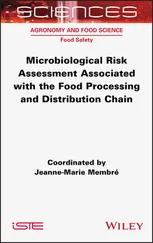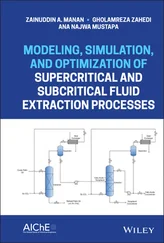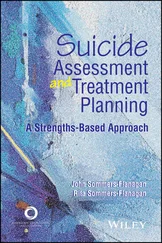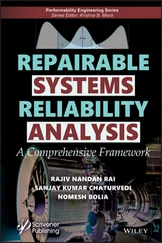12 Part II Reliability Techniques 3 Multi-State Systems (MSSs) 3.1 Classical Multi-state Models3.2 Generalized Multi-state Models3.3 Time-dependent Multi-State Models3.4 Methods to Evaluate Multi-state System Reliability3.4.1 Methods Based on MPVs or MCVs3.4.2 Methods Derived from Binary State Reliability Assessment3.4.3 Universal Generating Function Approach3.4.4 Monte Carlo Simulation3.5 ExercisesReferences 4 Markov Processes 4.1 Continuous Time Markov Chain (CMTC)4.2 In homogeneous Continuous Time Markov Chain4.3 Semi-Markov Process (SMP)4.4 Piecewise Deterministic Markov Process (PDMP)4.5 ExercisesReferences 5 Monte Carlo Simulation (MCS) for Reliability and Availability Assessment 5.1 Introduction5.2 Random Variable Generation5.2.1 Random Number Generation5.2.2 Random Variable Generation5.3 Random Process Generation5.3.1 Markov Chains5.3.2 Markov Jump Processes5.4 Markov Chain Monte Carlo (MCMC)5.4.1 Metropolis-Hastings (M-H) Algorithm5.4.2 Gibbs Sampler5.4.3 Multiple-try Metropolis-Hastings (M-H) Method5.5 Rare-Event Simulation5.5.1 Importance Sampling5.5.2 Repetitive Simulation Trials after Reaching Thresholds (RESTART)5.6 ExercisesAppendixReferences 6 Uncertainty Treatment under Imprecise or Incomplete Knowledge 6.1 Interval Number and Interval of Confidence6.1.1 Definition and Basic Arithmetic Operations6.1.2 Algebraic Properties6.1.3 Order Relations6.1.4 Interval Functions6.1.5 Interval of Confidence6.2 Fuzzy Number6.3 Possibility Theory6.3.1 Possibility Propagation6.4 Evidence Theory6.4.1 Data Fusion6.5 Random-fuzzy Numbers (RFNs)6.5.1 Universal Generating Function (UGF) Representation of Random-fuzzy Numbers6.5.2 Hybrid UGF (HUGF) Composition Operator6.6 ExercisesReferences 7 Applications 7.1 Distributed Power Generation System Reliability Assessment7.1.1 Reliability of Power Distributed Generation (DG) System7.1.2 Energy Source Models and Uncertainties7.1.3 Algorithm for the Joint Propagation of Probabilistic and Possibilistic Uncertainties7.1.4 Case Study7.2 Nuclear Power Plant Components Degradation7.2.1 Dissimilar Metal Weld Degradation7.2.2 MCS Method7.2.3 Numerical ResultsReferences
13 Part III Optimization Methods and Applications 8 Mathematical Programming 8.1 Linear Programming (LP)8.1.1 Standard Form and Duality8.2 Integer Programming (IP)8.3 ExercisesReferences 9 Evolutionary Algorithms (EAs) 9.1 Evolutionary Search9.2 Genetic Algorithm (GA)9.2.1 Encoding and Initialization9.2.2 Evaluation9.2.3 Selection9.2.4 Mutation9.2.5 Crossover9.2.6 Elitism9.2.7 Termination Condition and Convergence9.3 Other Popular EAs9.4 ExercisesReferences 10 Multi-Objective Optimization (MOO) 10.1 Multi-objective Problem Formulation10.2 MOO-to-SOO Problem Conversion Methods10.2.1 Weighted-sum Approach10.2.2 ε-constraint Approach10.3 Multi-objective Evolutionary Algorithms10.3.1 Fast Non-dominated Sorting Genetic Algorithm (NSGA-II)10.3.2 Improved Strength Pareto Evolutionary Algorithm (SPEA 2)10.4 Performance Measures10.5 Selection of Preferred Solutions10.5.1 “Min-max” Method10.5.2 Compromise Programming Approach10.6 Guidelines for Solving RAMS+C Optimization Problems10.7 ExercisesReferences 11 Optimization under Uncertainty 11.1 Stochastic Programming (SP)11.1.1 Two-stage Stochastic Linear Programs with Fixed Recourse11.1.2 Multi-stage Stochastic Programs with Recourse11.2 Chance-Constrained Programming11.2.1 Model and Properties11.2.2 Example11.3 Robust Optimization (RO)11.3.1 Uncertain Linear Optimization (LO) and its Robust Counterparts11.3.2 Tractability of Robust Counterparts11.3.3 Robust Optimization (RO) with Cardinality Constrained Uncertainty Set11.3.4 Example11.4 ExercisesReferences 12 Applications 12.1 Multi-objective Optimization (MOO) Framework for the Integration of Distributed Renewable Generation and Storage12.1.1 Description of Distributed Generation (DG) System12.1.2 Optimal Power Flow (OPF)12.1.3 Performance Indicators12.1.4 MOO Problem Formulation12.1.5 Solution Approach and Case Study Results12.2 Redundancy Allocation for Binary-State Series-Parallel Systems (BSSPSs) under Epistemic Uncertainty12.2.1 Problem Description12.2.2 Robust Model12.2.3 ExperimentReferences
14 Index
15 End User License Agreement
1 Chapter 1Figure 1.1 The pmf of the binomial...Figure 1.2 The pmf of the Poisson...Figure 1.3 The pdf of the exponential...Figure 1.4 The pdf of the Weibull...Figure 1.5 The pdf of the gamma...Figure 1.6 The pdf of the lognormal...Figure 1.7 Illustration of Paris...Figure 1.8 Reliability block diagram...Figure 1.9 Reliability block diagram...Figure 1.10 Reliability block diagram...Figure 1.11 Bridge system.Figure 1.12 Block decision diagram...Figure 1.13 Electrical generating system.Figure 1.14 Reliability block diagram...Figure 1.15 Diagram of the power grid...Figure 1.16 Reliability block diagram...
2 Chapter 2Figure 2.1 Example for the search tree...Figure 2.2 Shortest...
3 Chapter 4Figure 4.1 The Markov Diagram of the...Figure 4.2 The Markov Diagram of the...Figure 4.3 Degradation Process of...Figure 4.4 Sample Path of...Figure 4.5 A Three-state semi-Markov...Figure 4.6 An illustrative example of a system...Figure 4.7 The Evolution of Degradation Processes...Figure 4.8 The Diagram of the Series-parallel...Figure 4.9 State Transition Diagram for...
4 Chapter 5Figure 5.1 comparison between inverse sampling...Figure 5.2 Distribution obtained by...Figure 5.3 State distribution...Figure 5.4 Markov jump process...Figure 5.5 M-H samplingFigure 5.6 Sampling with Gibbs...Figure 5.7 Sampling with Multiple-try...
5 Chapter 6Figure 6.1 (a). A non-normal convex fuzzy...Figure 6.2 Possibility distribution...Figure 6.3 Three-dimensional and two-dimensional...
6 Chapter 7Figure 7.1 Conceptual diagram of the representative...Figure 7.2 Comparison of joint propagation...Figure 7.4 Comparison of joint propagation...Figure 7.3 Comparison of joint propagation...Figure 7.5 Transition diagram of the multi-state...Figure 7.6 Convergence plots of state...
7 Chapter 8Figure 8.1 Graphical solution to the...Figure 8.2 Search tree.Figure 8.3 The search tree...Figure 8.4 The search tree...
8 Chapter 9Figure 9.1 Example of binary...Figure 9.2 Example of tree-based...Figure 9.3 Swap operator for...Figure 9.4 One example of tree-based...Figure 9.5 Single-point crossoverFigure 9.6 Two-point crossover....Figure 9.7 Uniform crossover.Figure 9.8 Example of Order 1 crossover.Figure 9.9 Example of crossover for...
9 Chapter 10Figure 10.1 Pareto dominance and...Figure 10.2 Fast non-dominance sorting...Figure 10.3 An example of crowding distance.Figure 10.4 An example of generational...Figure 10.5 An example of computing spacing.Figure 10.6 An example of illustration...Figure 10.7 Best-compromise solution...Figure 10.8 Illustration of the compromise Min-Max...
10 Chapter 12Figure 12.1 Example of distribution generation...Figure 12.2 Graphical representation...Figure 12.3 Flow chart of NSGA-II...Figure 12.4 Pareto fronts for different...Figure 12.5 EENS v/s ECg [4].Figure 12.6 Violation probabilities...Figure 12.7 Change percentage in...
1 Chapter 4Table 4.1 Results for the degradation mode...
2 Chapter 7Table 7.1 Different uncertainties of the energy...Table 7.2 Case study parameter definitions and...Table 7.3 Comparison of the simulation results...
3 Chapter 10Table 10.1 Payoff Table of the MOO problem...Table 10.2 Steps of fast non-dominance sorting...Table 10.3 Example of removal iterations.
4 Chapter 11Table 11.1 The cost ($) of different maintenance...Table 11.2 Tractable RC representations
1 Cover
Читать дальше












